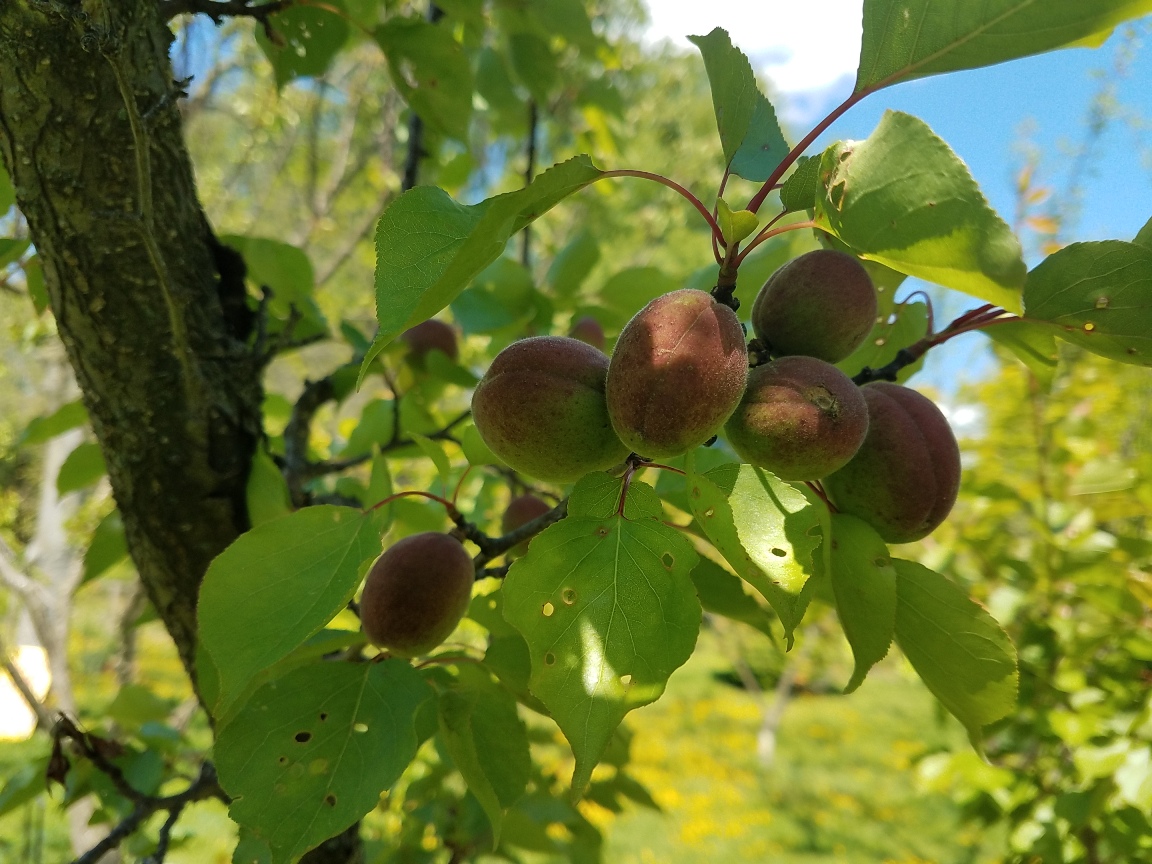POP TIPS: time to thin your fruit!
16 views
Skip to first unread message
Phil Forsyth
May 15, 2023, 12:49:33 PM5/15/23
to Philadelphia Orchard Group
Dear Philly Orchardists,
It's fruit thinning time- see POP TIPS and video below! This is a very important annual orchard care task for common fruits, and should ideally be completed between mid May and mid June.
Check out the POP Spring Orchard Care video on fruit thinning and key pest and disease challenges and read more below:
If you want to get some hands-on experience with fruit thinning, one opportunity is to sign up to volunteer at our next orchard work day at Bartram's Garden on Saturday, 6/10:
POP TIPS: THINNING FRUIT
By this time, small fruitlets have formed on most fruit trees and it's time to thin them out!

Fruit on early-bloomers like apricots are already of good size and should be thinned first.
The next few weeks are ideal for thinning fruit on your trees, new and old:
FOR NEW FRUIT TREES planted last fall or this spring, you should remove all the young fruitlets (yes, those little baby fruit have to go). You can use hand pruners or your fingers to pinch them off. Young trees need to spend their limited energy on establishing their roots and growing their structure rather than growing and ripening fruit. Not removing fruit from a young tree can stunt and even sometimes kill a tree. Trees in their second year after planting can be left to fruit, unless they didn't put on much growth the previous year. However, removing all or most of the fruit in the second year can actually help you get more fruit sooner by allowing the tree to continue to concentrate its energy on growing structure and root system. Note: small fruits (like cherries) and berries don't generally need to be thinned because they don't stress the plants as much as larger fruits.
FOR APPLES, PEARS, PEACHES, and sometimes PLUMS and APRICOTS: these fruit trees need to be thinned throughout their lifespan. Apples, pears, and Asian pears should be hand-thinned to 5" apart on the tree, peaches to 8". Some plum and apricot trees with heavy fruit set should also be thinned to a few inches apart to avoid the risk of branches breaking under the weight.
Apples and pears flower and fruit in clusters. Remove all but the largest (usually the centermost) fruitlet in each cluster, unless that fruitlet is obviously damaged or diseased. If clusters are closer than the recommended distance, you will need to remove some of the clusters entirely.
If you've been having problems with squirrel predation, perhaps consider leaving your fruit at lesser intervals (4" for peaches?).

Fruit thinning is important to produce the best quality and size of fruit, and helps reduce problems with common diseases like brown rot and insect pests like plum curculio, OFM, and codling moth. It also helps reduce alternate bearing, which is the tendency of some trees to produce large harvests one year and little or no harvest the next.

As you're thinning your stone fruits, be sure to remove any showing signs of brown rot (or any other pest or disease damage)!
FRUIT BAGGING VIDEO: We'll share another post on bagging fruit for pest protection soon, but check out this video on how to do that at the same time as fruit thinning:
Phil Forsyth, Co-Executive Director
Philadelphia Orchard Project
Pronouns: he/him
Reply all
Reply to author
Forward
0 new messages
